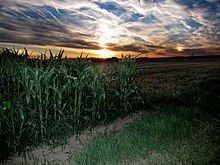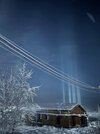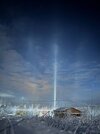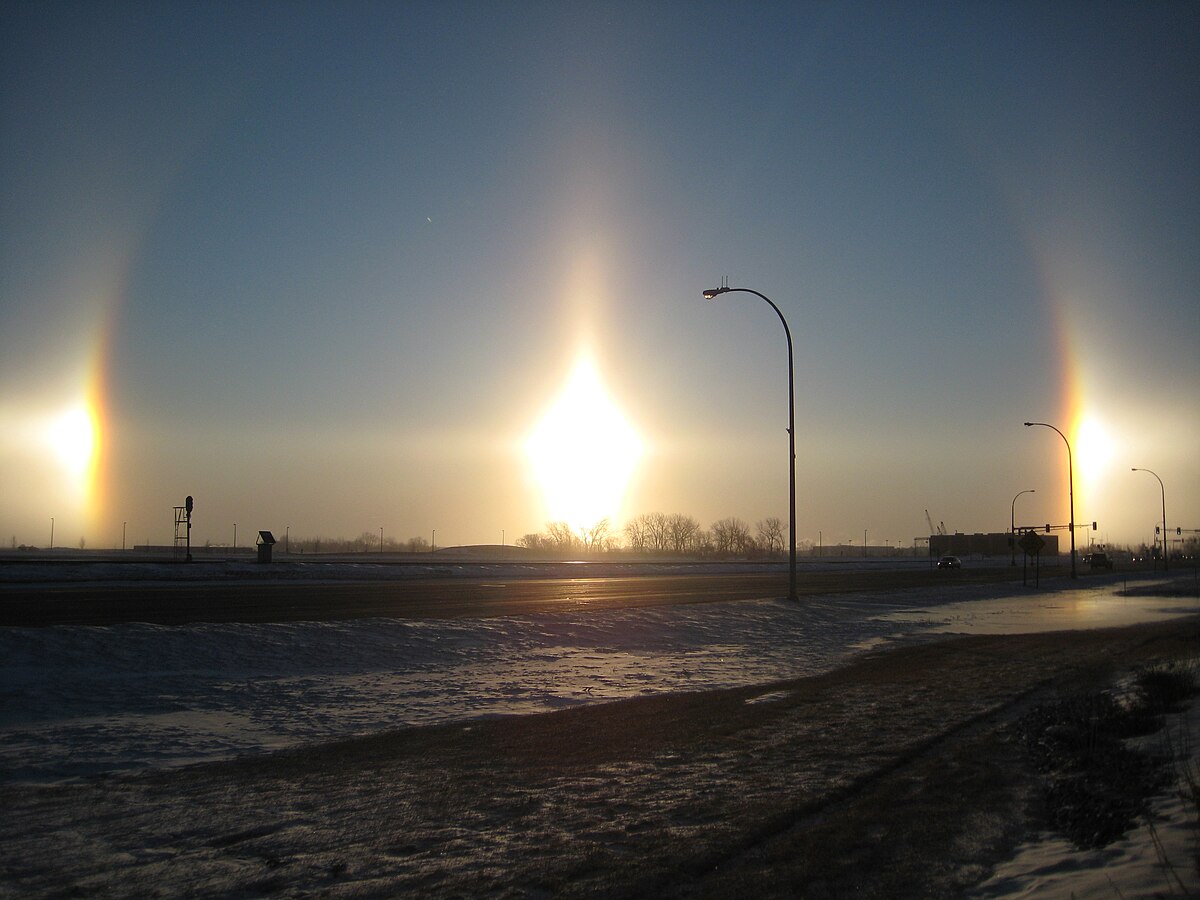
en.wikipedia.org
These two images you provided are actually Sun Dogs.
These are frequents in the Arctic and Canadian's North when the weather is extremely cold. Impressive, aren't they?
However, I've never seen pillars of lights before. Or the Moon surrounded by a halo. Really interesting!
Wikipedia's info on Sun Dogs:
A
sun dog (or
sundog) or
mock sun, also called a
parhelion[1] (plural
parhelia) in
meteorology, is an
atmospheric optical phenomenon that consists of a bright spot to one or both sides of the
Sun. Two sun dogs often flank the Sun within a
22° halo.
The sun dog is a member of the family of
halos caused by the
refraction of sunlight by
ice crystals in the atmosphere. Sun dogs typically appear as a pair of subtly colored patches of light,
around 22° to the left and right of the Sun, and at the same
altitude above the horizon as the Sun. They can be seen anywhere in the world during any season, but are not always obvious or bright. Sun dogs are best seen and most conspicuous when the Sun is near the horizon.
Formation and characteristics

A right-hand sun dog in
Salem, Massachusetts. Also visible are a
Parry arc, an
upper tangent arc, a 22° halo, and part of the parhelic circle.

Sun dogs in
Hesse,
Germany
A sun dog in
Saskatoon, Canada

Parhelion seen in central London
Sun dogs are commonly caused by the
refraction and
scattering of light from horizontally oriented
[2] plate-shaped
hexagonal ice crystals either
suspended in high and cold
cirrus or
cirrostratus clouds, or drifting in freezing moist air at low levels as
diamond dust.
[3] The crystals act as
prisms, bending the light rays passing through them with a minimum deflection of 22°. As the crystals gently float downwards with their large hexagonal faces almost horizontal, sunlight is refracted horizontally, and sun dogs are seen to the left and right of the Sun. Larger plates wobble more, and thus produce taller sun dogs.
[4]
Sun dogs are red-colored at the side nearest the Sun; farther out the colors grade through oranges to blue. The colors overlap considerably and are muted, never pure or saturated.
[5] The colors of the sun dog finally merge into the white of the
parhelic circle (if the latter is visible).
[6]
The same plate-shaped ice crystals that cause sun dogs are also responsible for the colorful
circumzenithal arc, meaning that these two types of halo tend to co-occur.
[7] The latter is often missed by viewers, since it is located more or less directly overhead. Another halo variety often seen together with sun dogs is the
22° halo, which forms a ring at roughly the same angular distance from the sun as the sun dogs, thus appearing to interconnect them. As the Sun rises higher, the rays passing through the plate crystals are increasingly skewed from the horizontal plane, causing their angle of deviation to increase and the sun dogs to move farther from the 22° halo, while staying at the same elevation.
[8]
It is possible to predict the forms of sun dogs as would be seen on other planets and moons.
Mars might have sun dogs formed by both water-ice and CO2-ice. On the
gas giant planets—
Jupiter,
Saturn,
Uranus, and
Neptune—other crystals form clouds of
ammonia,
methane, and other substances that can produce halos with four or more sun dogs.
[9] (The rest of the article on Wikipedia
Sun dog - Wikipedia)






 Chroniques de Russie
Chroniques de Russie











